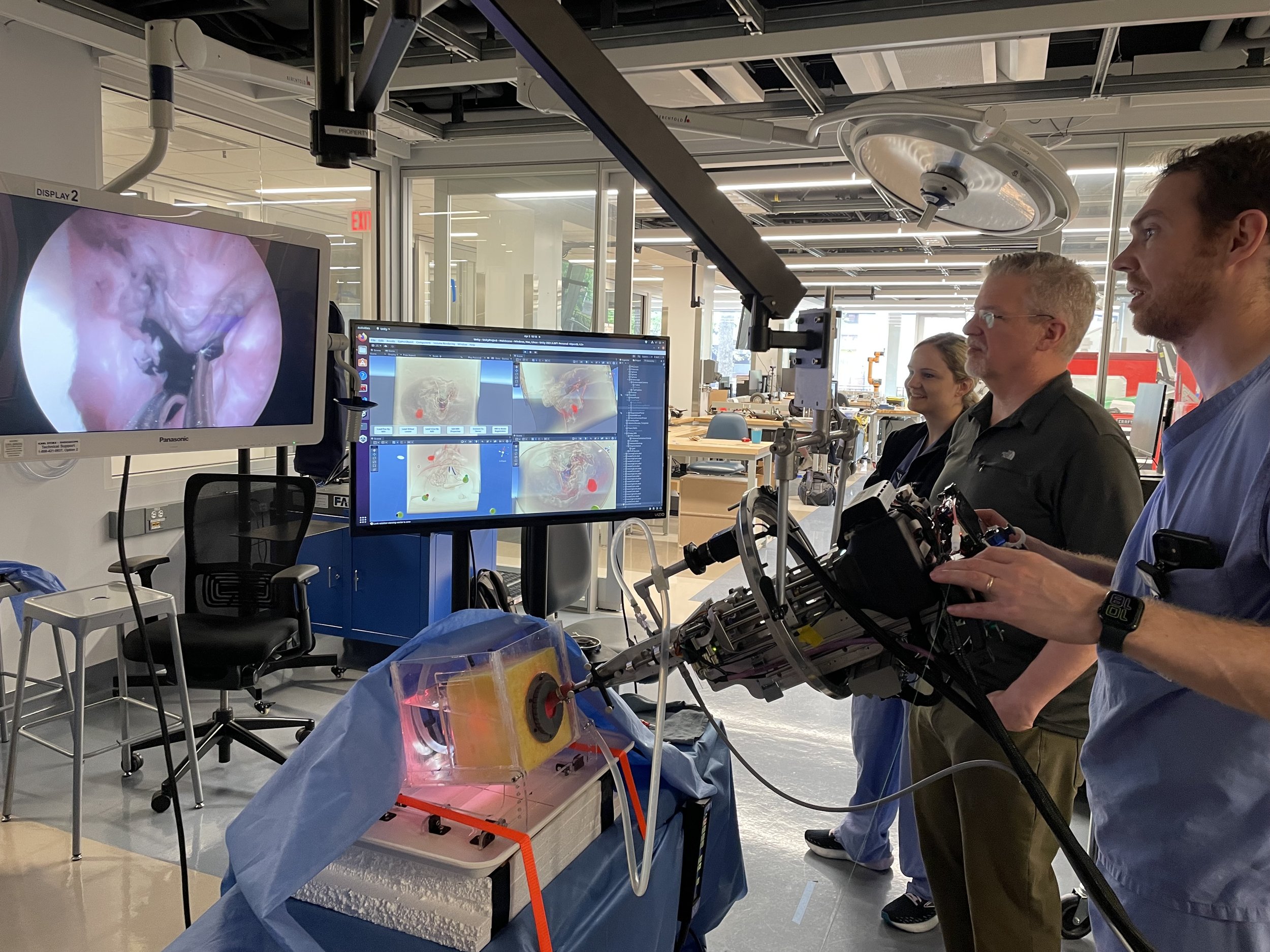Finding Invisible Tumors
Some prostate tumors can be seen in MRI images, but not by the human eye during surgery.
Becasue of this, patients often have their entire prostate removed, with tools that enter through their abdomen. Such surgeries require a lot of dissection simply to get to the prostate, and cause complications including impotence and incontinence. Toward sparing patients these complications and reducing invasiveness, we are exploring a new approach.
First, we reduce invasiveness by approaching the prostate through the urethra, using an endoscope outfitted with concentric tube robots. See our suturing page and the page of the lab’s startup company Virtuoso Surgical, Inc. to understand what such a robot looks like and how it operates. The difference here is that we must build this robot out of different components and with different actuators to enable it to work in an MRI environment.
The reason is that our approach to showing surgeons where the invisible tumors are is to use low field MRI. These new low field scanners use magnetic fields so low that metal will not fly across the room into them, and they do not even require a shielded room. They also cost an order of magnitude less than traditional scanners. In collaboration with Will Grissom at Case Western Reserve, we are using the images from these scanners (fused with preoperative MRI) to light up the tumor on a guidance display, showing the surgeon where to cut to get it all. Below is some experimental data from our first feasibility study using this system.
In this experiment we compared a robotic approach to a manual approach, and to the availability of image guidance, with and without the robot. Our results show that surgeons perform best when they have both a robot and image guidance available.


